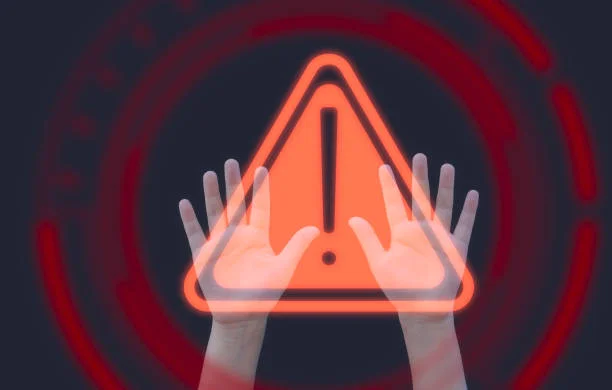You’ve been there before. Unboxing a new piece of furniture, a kitchen gadget, or even starting a new medication, you carefully spread out the instructions. You follow each step, double-check every diagram, and do everything exactly as you’re told. But instead of the expected result, something goes terribly wrong. The furniture collapses, the appliance malfunctions violently, or you suffer a severe side effect.
As noted by LawInfo, “an inadequate warning label … fails to inform consumers of non-obvious dangers,” meaning a product can be deemed defective—even if its design is sound. In other words, the most perilous flaw often lies not in what’s present, but in what’s missing.
It was similarly seen from the West Virginia University College of Law article that every year, countless preventable injuries occur because a manufacturer failed to communicate a product’s inherent risks. They have a fundamental legal and ethical “duty to warn” consumers about non-obvious dangers that can arise during normal use or even foreseeable misuse.
This gap between following directions and suffering an injury is where the law steps in to protect consumers. When a manufacturer fails to provide clear, understandable, and prominent warnings about the risks of their product, they can be held legally responsible. In these situations, working with experienced New York product liability lawyers means having someone who can carefully evaluate your claim, explain the legal process in plain terms, and build a strong case to hold negligent companies accountable.
Key Takeaways
- Manufacturers have a legal “duty to warn” consumers about non-obvious dangers, and a failure to do so can lead to serious injuries and legal liability.
- Effective warnings are conspicuous, clear, accurate, and often benefit from graphic elements, demonstrably influencing consumer behavior and improving safety.
- Real-world examples, like Chile’s food labeling law, prove that well-designed and enforced warning labels lead to significant positive changes in public health and consumer choices.
- If you’ve been harmed by a product with inadequate warnings, preserving evidence and consulting a legal professional are crucial steps to understanding your rights and holding manufacturers accountable.
What Makes a Warning “Legally Adequate”? The Three Pillars of Protection
It’s not enough for a manufacturer to simply slap a warning label on a product and call it a day. For a warning to be legally sufficient, it must be effective. Courts and safety experts generally agree that an adequate warning rests on three core pillars that ensure it can actually protect the user.
Pillar 1: Conspicuous
A warning is useless if no one sees it. To be effective, a warning must be placed where a user is likely to see it before they encounter the danger. This could mean on the product itself near the point of operation, on the exterior of the packaging, or at the beginning of an instruction manual. A warning buried in tiny print on the last page of a 50-page booklet is not conspicuous and likely not legally adequate.
Pillar 2: Clear & Understandable
The language used in a warning must be simple, direct, and avoid confusing technical jargon. It needs to communicate the danger to the average person who would be using the product. In many cases, this means using universally recognized symbols or pictograms to bypass language and literacy barriers. For products sold in diverse markets, providing warnings in multiple languages is often a necessary component of clarity.
Pillar 3: Accurate & Specific
Vagueness is the enemy of safety. A warning must precisely describe the nature of the risk and the potential severity of the harm. A general, all-encompassing phrase like “Use with Caution” offers no real guidance and is often legally insufficient. A far more effective—and legally sound—warning would be specific, such as, “Warning: Risk of electric shock if used near water. Do not operate with wet hands.” This tells the user exactly what the danger is (electric shock), where it occurs (near water), and what to avoid (wet hands).
The Science of Safety: Proof That Effective Warnings Work
The legal requirement for clear warnings isn’t just theoretical; it’s backed by a significant body of research demonstrating that well-designed warnings change human behavior and prevent injuries. When done correctly, warning labels are powerful tools for public safety.
The data is clear: warnings work. A comprehensive meta-analysis of nine different studies found that Health Warning Labels (HWLs) had a significant impact on consumer choices. The presence of a clear HWL on unhealthy foods and drinks made participants 26% less likely to choose that product. This proves that when people are given clear, concise information at the point of decision, they often make safer choices.
Furthermore, the way a warning is presented matters immensely. For years, a debate has raged about the effectiveness of text-only labels versus those that include images. Research from Harvard Business School provides a compelling answer. The study found that graphic warning labels with images were significantly more effective than text-only labels in reducing purchases of sugary drinks. Visuals create a stronger, more immediate emotional response and can communicate risk faster and more effectively than words alone, especially across different literacy levels.
Case Study in Success: How Chile Transformed Public Health with Better Labels
To see the power of effective warnings on a national scale, look no further than Chile. In 2016, the country implemented a groundbreaking food labeling law to combat soaring rates of obesity. Instead of confusing nutritional panels, the law required processed foods high in sugar, salt, saturated fat, or calories to feature large, black-and-white, stop-sign-shaped warning labels on the front of the package.
The results were nothing short of transformative. A study evaluating the law’s impact revealed a staggering 24% drop in consumer purchases of foods and beverages featuring these new, easy-to-understand warning labels. The program was not only effective but also feasible for the industry. Compliance rates were remarkably high: 93% for products requiring warnings for high levels of fat, sodium, or energy, and 96% for those high in sugar.
Chile’s success story is a powerful real-world demonstration of what happens when regulators and manufacturers prioritize clear, direct communication. It proves that simple, well-enforced warning systems can lead to massive, positive changes in public health and consumer behavior.
When Warnings Fail: Common Reasons a Manufacturer Is Held Liable
While Chile offers a model for success, many manufacturers fall short of their duty to warn, leading to preventable injuries and, often, legal consequences. A product liability claim based on “failure to warn” often arises from one of these common mistakes:
- Buried Warnings: The warning is technically present, but it’s hidden in a place the average user will never look—in dense fine print, on an obscure part of the packaging, or deep within a lengthy manual. If a warning isn’t prominent, it fails its primary purpose.
- Downplayed Risk: The language used intentionally or negligently minimizes the true danger. A warning that says a chemical “may cause mild irritation” when it is capable of inflicting severe chemical burns is dangerously misleading and a clear failure of the manufacturer’s duty.
- Lack of Pictograms or Universal Symbols: In our globalized world, it is foreseeable that products will be used by people who may not speak the local language or have low literacy. Failing to use internationally recognized symbols for dangers like “electric shock,” “corrosive,” or “flammable” can be a form of negligence.
- Ignoring Foreseeable Misuse: A manufacturer’s duty doesn’t stop at the product’s intended use. They must also warn against common, predictable ways a consumer might misuse the product. For example, a manufacturer of an indoor space heater should warn against using it in a small, unventilated bathroom where carbon monoxide could build up, as this is a foreseeable misuse.
- Outdated Warnings: Dangers can become apparent long after a product hits the market. When new risks associated with a product are discovered, the manufacturer has a continuing duty to update its warnings for products still being sold and, in some cases, to inform past customers of the newly discovered danger.
What to Do If You’ve Been Harmed by an Inadequately Labeled Product
If you suspect that your injury was caused not by your own error but by a product’s poor instructions or missing warnings, it’s crucial to act quickly and strategically to protect your rights.
- Seek Medical Attention Immediately: Your health is the absolute priority. Get a proper medical diagnosis and follow all treatment recommendations. This not only ensures your well-being but also creates an official record of your injuries.
- Preserve the Product and Packaging: This is one of the most critical steps. Do not throw away, alter, or attempt to repair the product. Keep the product itself, along with all original packaging, instructions, manuals, and receipts. This is the central piece of evidence in a potential product liability case.
- Document Everything: Take clear photos and videos from multiple angles. Capture images of the product, the warning label (or its absence), your injuries, and the location where the injury occurred. Write down a detailed account of what happened, including the date, time, and sequence of events, while it is still fresh in your memory.
- Do Not Speak to the Manufacturer’s Representatives: The manufacturer or their insurance company may contact you. Remember, their goal is to minimize their company’s financial liability. Politely decline to give a recorded statement or sign any documents without first seeking legal advice.
- Consult a Legal Professional: Navigating a product liability claim is complex. An experienced product liability attorney can evaluate the details of your case, determine if the manufacturer failed in its duty to warn, and guide you through the process of holding them accountable for the harm you’ve suffered.
Conclusion: Safety Is a Right, Not a Suggestion
When you purchase a product, you have the right to assume that if you follow the instructions, you will be safe. Clear, effective, and honest warnings are not an optional courtesy; they are a manufacturer’s fundamental legal and ethical responsibility.
An injury caused by a product’s poor or missing warning is not your fault. The burden of responsibility falls on the company that designed, manufactured, and sold a product without providing the information necessary for its safe use. Following the instructions should lead to a successful and safe outcome, not a trip to the emergency room.
Explore ideas that challenge the norm and inspire change at Management Works Media.






